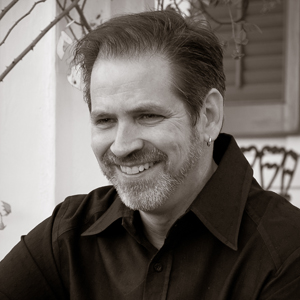When does something start being a “thing?” When writing music, I find this transition to be a very important moment, a bit like a birth. When a piece achieves “thing-hood,” it now occupies a new place in my mind.
Identity
Needless to say this is a philosophical point; identity can be given to almost anything, and when viewed closely, nearly always breaks down. As an example, Benoit Mandelbrot and others have taught us that things can’t really be measured in the “real” world in the same way they can in a pure geometric way. A coastline can’t be measured accurately at all scales; the size of the ruler controls the result. When viewed from space, the coastline of an island is much shorter than if measured rock by rock, or by taking into account the bumps on the surfaces of those rocks. Perspective is everything.
We certainly see our bodies as one “item” yet we lose cells, they die, and we remain ourself. Even losing a limb or organ, we still exist as a “thing.” Aren’t those missing parts part of us? Of course, without certain parts, we wouldn’t last long, such as a liver, and others we need every second. Where does the item we call “ourself” begin and end? Again, it’s a matter of perspective.
The vagueness of identity aside, there are distinct advantages to collecting parts and giving them a collective name. It allows us to take various “meta” views of our experience, and to work at a level appropriate to the task at hand. Cutting the “lawn” doesn’t require differentiation between blades of grass. (Even I’m not that analytical)
Art and thing-hood
When starting to compose, I find that there is a point when the piece comes alive and can be considered a “thing.” I don’t mean the hypothetical idea of a piece, (which some might call a thing) but a concrete item with identity. This is a good moment in the process. (to be inevitably followed by many difficult moments) Much like the moment we realize we are in love, the sudden certainty that we have decided something, or any other major life event, we know something new is going to happen.
It is to our advantage to grant our pieces thing-hood as soon as possible. For me, there are certain milestones in a project that do this:
- There is enough music there to form a long phrase or section. It could be a melodic or harmonic thing, and some of the other elements may be incomplete, but it begins to “speak.”
- Ideas have become more cohesive; there are now elements that seem to “fit” the piece, and they can be examined, varied, and transformed to continue the process. These could be melodic ideas, rhythmic figures, particular chords or voicings, textures, patterns. Almost anything that seems uniquely part of the concept.
- More abstractly, elements of the piece begin to play in my head while I’m doing other things. This illustrates how it’s not just that the work has changed, but it has begun changing me, as well.
How a thing helps us
When a piece has achieved an identity, it does things for our process. The advantages of this are many:
- The piece “calls” to me, and I feel compelled to work on it. (this might just be a manifestation of OCD, but perhaps a useful one)
- I feel that leaving it unfinished is somehow wrong.
- The work starts “writing itself” meaning there is momentum, and there are enough elements and ideas to “ignite.”
- My musical perception is changed; other music is now seen as a bubbling fountain of concepts, some of which might be useful.
- Analytical and artistic skills get “warmed up” and the work, though occasionally frustrating, feels rewarding.
- Certain ideas seem inevitable, rather than forced. (Though it is dangerous to depend on this; sometimes this isn’t the case, yet the work can come out nicely)
Give it life
I have found some ways to accelerate the growth of identity in a work, depending on the situation and goal.
- Gather as much information about what you intend to do. Knowing that you wish to compose a sensitive love ballad, a perky jingle, or a dance tune, the tempo, length, mood, style, anything is a decision. Write it down as a sort of “constitution” of your piece. (remember some elements might morph and change, just know which ones have this freedom and which don’t.)
- Give your piece a title as soon as possible, even if it is a working title. Even thinking about this adds identity to your work.
- Put your piece into some kind of fixed form. If you compose by improvising or playing your instrument, failing to do this will cause your work to be a cloud of probability rather than a thing with form. It’s still possible to change and edit as much as you like, but there is something to writing it down or recording (I do both) that gives it substance.
- Don’t suppress your work’s identity and life by endlessly re-writing. I have done this and these pieces sometimes become so burdened with second thoughts and doubts that they end up going nowhere, and becoming sources of guilt. Perfect is impossible.
- Just as it’s important to take inventory of the things you know about the piece, (as stated above) It’s equally important to allow it to follow its own path. This isn’t an excuse to say “I do what I do” and ignore the target you are trying to hit, (I’ve seen people do that, and it didn’t work out well) rather, it’s necessary to allow things to find an equilibrium between the needs of the various elements.


